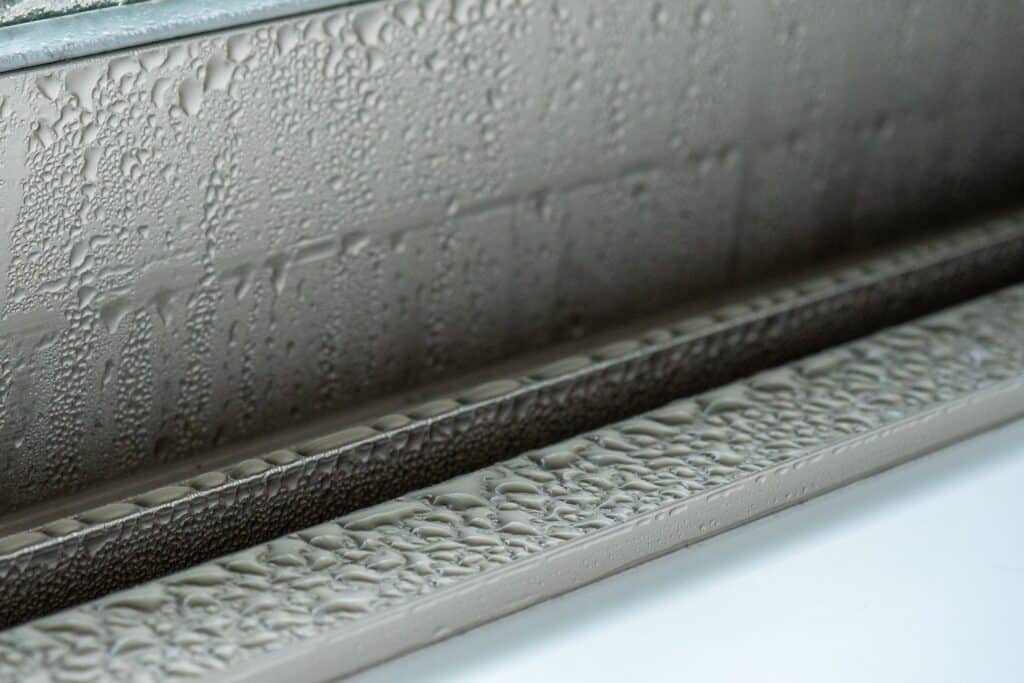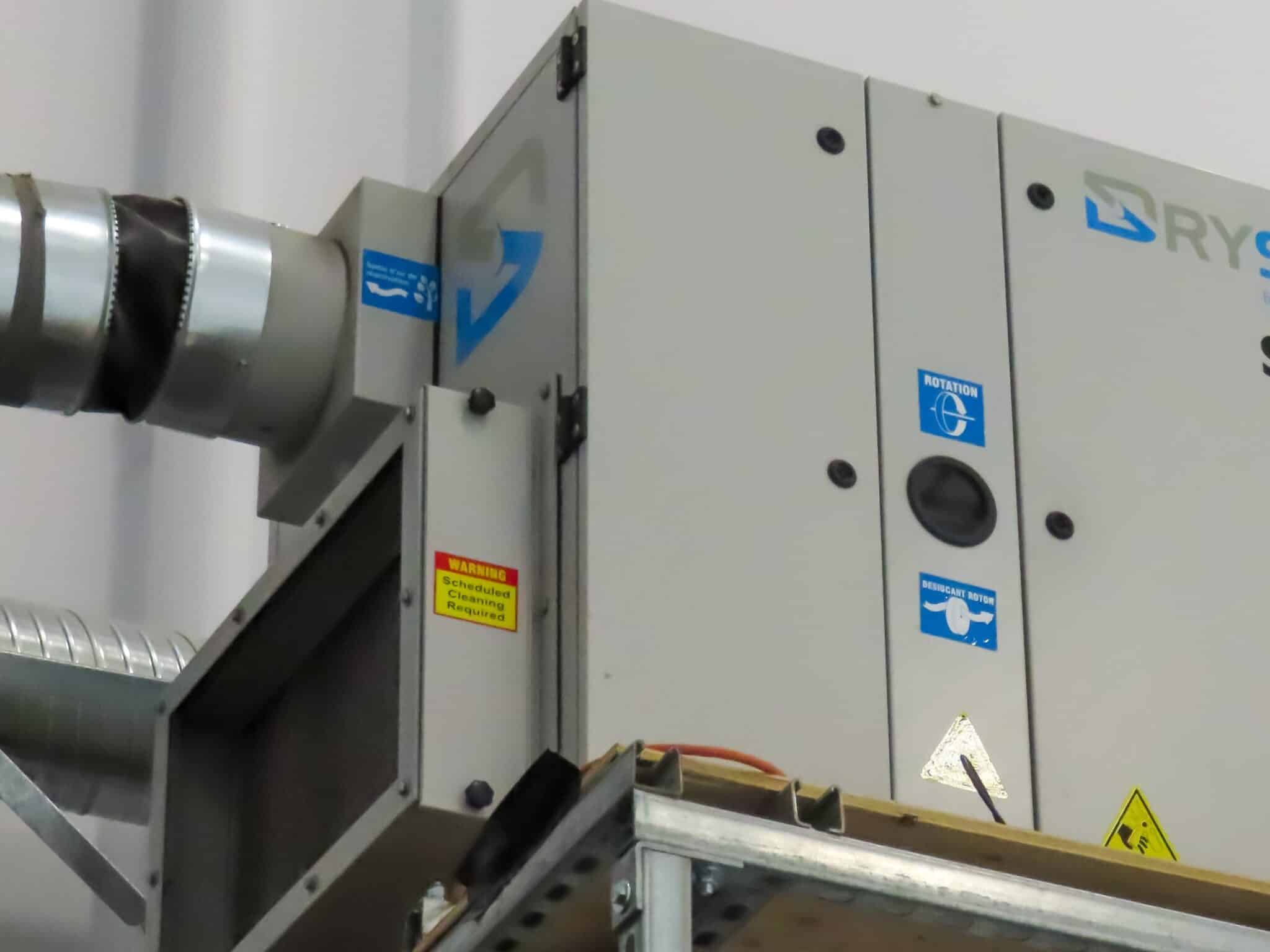
Why Moisture Control Is Essential for Healthy Homes
Moisture control is often the most overlooked aspect of home maintenance, yet it is one of the most essential for long-term health. Excess indoor moisture might seem harmless at first, but it can quickly turn your living space into a breeding ground for problems. From mold growth and poor air quality to pest infestations and structural decay, moisture quietly causes serious issues behind the scenes. In places like Saginaw and Keller, where seasonal humidity is common, moisture control deserves every homeowner’s attention.
When humidity levels spike, the comfort and safety of your home can decline without warning. Damp conditions do not just feel uncomfortable, they invite allergens, irritants, and other health risks. Families with children or older adults are especially vulnerable to the effects of excessive indoor moisture. That is why moisture control should be part of your everyday home care routine.
Poor ventilation, leaky windows, and neglected HVAC systems are often the culprits behind rising moisture levels. But with the right strategies, every homeowner can take charge of their indoor environment. Proper ventilation, insulation, and regular maintenance make a powerful difference, especially in humid regions like Saginaw and Keller.
By learning how to manage indoor humidity effectively, you can prevent long-term damage and improve your quality of life. Moisture control protects your health, your comfort, and the investment you have made in your home.
How Excess Moisture Affects Indoor Air Quality
Moist indoor air might feel slightly uncomfortable, but did you know it can also make the air you breathe harmful? Excess humidity allows allergens like mold spores and dust mites to multiply, reducing air quality. When the indoor air gets heavy with moisture, it traps pollutants and irritants that should be filtered or ventilated. That is why moisture control is directly linked to healthy breathing, especially in family homes.
Poor air quality does not always come with obvious signs like odors or visible mold. Instead, symptoms may appear as chronic coughs, sneezing, and even frequent headaches. Children and elderly family members often show these effects first because their immune systems are more sensitive. Over time, these issues can lead to serious health concerns if moisture control is not prioritized.
In Saginaw and Keller, spring and summer humidity can make indoor air feel thick and stale. That moisture creates the perfect conditions for bacteria and viruses to thrive. Without proper airflow and dehumidification, indoor environments become a magnet for airborne health risks. So, improving indoor air starts with identifying and correcting moisture imbalances.
Thankfully, small adjustments can make a noticeable difference in your home’s air quality. Simple steps like using exhaust fans and checking HVAC filters help control moisture daily. You can also benefit from inspecting your home’s insulation and sealing to prevent dampness. Moisture control ensures the air you breathe is fresh, clean, and safe, exactly how a healthy home should feel.

The Link Between Moisture and Mold Growth
Have you ever noticed dark spots on ceilings or walls and wondered where they came from? That is often mold, and it thrives in damp, hidden spaces within your home. Mold only needs moisture, warmth, and a food source like drywall or wood to spread quickly. That is why moisture control plays a vital role in keeping mold at bay.
Mold growth does not just damage surfaces, it affects your family’s health, too. Mold spores can trigger asthma, allergies, and even skin irritations when inhaled or touched. In homes across Saginaw and Keller, rising humidity during warmer months creates ideal mold conditions. Without proper ventilation and inspections, mold often goes unnoticed until it is widespread.
Areas like basements, bathrooms, and laundry rooms are hotspots for hidden mold colonies. Mold can even grow behind wallpaper, under carpets, or inside HVAC systems. Homeowners often overlook these places during routine cleaning, making moisture control even more critical. When ignored, mold not only spreads but also weakens your home’s structure over time.
Preventing mold starts with consistent moisture control efforts year-round. That means sealing leaks, improving airflow, and using dehumidifiers in trouble spots. Regularly checking walls, windows, and plumbing for signs of excess moisture also helps catch mold early. With proactive steps, you can eliminate conditions that mold needs to thrive and keep your home safe and dry.
Structural Damage Caused by Prolonged Dampness
Did you know excess moisture can quietly weaken your home’s very foundation over time? When left unchecked, dampness seeps into wood, drywall, and even concrete, causing gradual deterioration. Floorboards may warp, walls may crack, and ceilings may sag under the strain of trapped moisture. That is why moisture control is not just about comfort, it protects your home’s structure, too.
In Saginaw and Keller, shifting weather patterns often cause fluctuating humidity that seeps into crawl spaces and attics. Moisture trapped in these areas slowly breaks down support beams, insulation, and floor joists. What starts as a small leak or damp spot can evolve into costly structural repairs. Moisture control helps identify and resolve these issues before they become major problems.
Homeowners often overlook early warning signs like peeling paint, musty smells, or minor ceiling stains. These may seem cosmetic but actually point to deeper damage within walls or floors. Even metal components like nails and fasteners can rust, reducing overall structural integrity. Addressing these concerns early through effective moisture control prevents long-term decay.
Protecting your investment means staying ahead of moisture-related issues year-round. Regular inspections, especially after storms or heavy rainfall, can uncover hidden trouble spots. Sealing cracks, replacing damaged insulation, and maintaining gutters are practical ways to control moisture. With consistent care, moisture control preserves your home’s strength and keeps it standing tall for years to come.
How Moisture Invites Unwanted Pests
Have you ever wonder why certain bugs always seem to show up in damp corners of your home? That is because many pests are drawn to moisture, using it as a signal that shelter and food are nearby. Termites, ants, cockroaches, and silverfish thrive in humid environments where they can hide and reproduce easily. For this reason, moisture control is a critical part of any pest prevention strategy.
Moisture-rich areas like basements, crawl spaces, and kitchens create perfect hiding places for pests. In Keller and Saginaw, seasonal humidity spikes make these areas even more vulnerable. Damp wood becomes a feast for termites, while wet floors attract cockroaches seeking water sources. Without moisture control, these pests can turn minor leaks into full-blown infestations.
The health risks pests bring should not be ignored. Insects carry bacteria and allergens that contaminate your living spaces and affect your air quality. Cockroach droppings and pest remains can worsen asthma and allergies, especially in children. Moisture control helps eliminate the damp conditions pests need to survive, reducing their presence inside your home.
To stay pest-free, start by addressing areas prone to moisture accumulation. Repair leaky pipes, seal cracks, and use dehumidifiers in trouble spots. Clean gutters and redirect rainwater away from your home’s foundation. With steady maintenance and attention to detail, moisture control becomes your first line of defense against uninvited guests.
The Role of Ventilation in Moisture Management
Do your windows fog up or feel damp inside, even when it is not raining outside? That is often a sign your home lacks proper airflow. Ventilation allows moist air to escape and dry air to circulate, preventing humidity buildup indoors. For homeowners, moisture control starts with ensuring every room gets the air movement it needs.
Without ventilation, daily activities like cooking, bathing, and laundry release moisture that lingers in the air. Over time, this trapped humidity causes mold, mildew, and stale air to take over. In Keller and Saginaw, where humidity can climb fast, good ventilation is even more essential. Moisture control depends on how efficiently your home breathes year-round.
Exhaust fans in bathrooms and kitchens are key tools in moisture management. Attics and crawl spaces also need proper airflow to stay dry and mold-free. Passive vents and mechanical ventilation systems work together to push damp air outside. Each element plays a critical role in maintaining balanced moisture levels indoors.
If your home feels stuffy or smells musty, consider upgrading your ventilation system. Clean vents regularly and replace filters to boost air circulation and reduce moisture retention. Open windows when weather allows and run fans during high-humidity activities. When managed properly, ventilation becomes one of the simplest, most effective moisture control strategies available.
Sealing and Insulating to Prevent Moisture Intrusion
Have you checked your windows, doors, or attic for tiny gaps that let moisture sneak in? Small leaks may seem harmless, but over time, they allow damp air to infiltrate your living spaces. Sealing and insulating these vulnerable spots helps block moisture before it causes mold or structural damage. That is why moisture control must include both insulation and sealing strategies.
Cracks around windows, door frames, and foundations act like hidden gateways for outside humidity. In Keller and Saginaw, where seasonal storms are common, this intrusion can escalate quickly. Proper insulation traps indoor air and prevents condensation, especially in walls and attics. Effective moisture control depends on this barrier working correctly through every season.
Spray foam, caulk, and weatherstripping are simple yet powerful tools to seal up your home. Insulating materials like fiberglass or rigid foam help stabilize indoor temperatures and reduce humidity. Together, they create a protective shell that keeps moisture out and comfort in. These upgrades also improve energy efficiency, which saves money on utility bills.
Do not wait for moisture to show visible signs before taking action. Perform seasonal checks around windows, doors, and your attic or basement. Seal cracks immediately and upgrade old or damaged insulation to maintain strong protection. Moisture control becomes easier when your home is tightly sealed and properly insulated from the start.
HVAC Systems: Hidden Allies in Moisture Control
Did you know your HVAC system does more than regulate temperature? It also plays a major role in managing indoor humidity levels. When working efficiently, it removes moisture from the air and maintains healthy humidity throughout your home. That is why moisture control depends heavily on the condition and setup of your HVAC system.
Poorly maintained HVAC units can become moisture traps instead of moisture fighters. Dirty filters, clogged drain lines, or oversized units often lead to excess indoor humidity. In Saginaw and Keller, where weather shifts can be extreme, HVAC performance becomes critical to daily comfort. Without moisture control, your system works harder, increasing wear and energy use.
Routine maintenance keeps your HVAC system operating at peak moisture-reducing performance. Replace filters regularly, clean condenser coils, and check drain pans for standing water. Professional inspections can also detect issues like refrigerant imbalances or airflow restrictions. These steps ensure consistent moisture control throughout every season.
Consider adding a whole-home dehumidifier to complement your HVAC system, especially in high-humidity areas. Smart thermostats can also help regulate both temperature and humidity automatically. When properly maintained, your HVAC system becomes one of your best allies in effective moisture control. Take care of it, and it will take care of your comfort and health.
Common Moisture Hotspots in Homes
Where does unwanted moisture hide in your home, waiting to cause trouble? Often, the dampest areas go unnoticed until damage becomes visible. Basements, bathrooms, crawl spaces, and attics are the most common places where moisture builds up silently. Identifying and monitoring these spots is key to successful moisture control.
In homes across Saginaw and Keller, these areas tend to collect moisture due to seasonal weather and inadequate ventilation. Moisture does not always present itself with puddles, it can be subtle and hidden. Watch for warping, discoloration, or musty odors as clear indicators. Effective moisture control starts with knowing where to look first.
Common indoor moisture hotspots include:
-
Basements:
Often poorly ventilated, prone to flooding, and vulnerable to high groundwater levels.
-
Bathrooms:
Generate daily steam, which condenses on mirrors, walls, and ceilings if not ventilated properly.
-
Crawl Spaces:
Collect condensation when insulation is missing or vents are blocked, encouraging mold and pests.
-
Attics:
Trap warm, humid air under the roof without adequate airflow, causing wood rot and mold.
Moisture can also gather under sinks, behind appliances, and around windows. Regular inspections help catch these issues before they escalate. Addressing these areas with sealing, ventilation, and insulation improves moisture control. Staying ahead of hidden moisture problems protects your home from damage and preserves your indoor air quality.
Health Benefits of a Dry, Well-Ventilated Home
Can something as simple as controlling indoor moisture really improve your family’s health? Absolutely, it impacts how you breathe, sleep, and feel every day. Moisture control reduces allergens, mold, and bacteria that thrive in damp environments. A dry, well-ventilated home promotes cleaner air and greater comfort year-round.
Moisture encourages the growth of harmful organisms like dust mites, mold spores, and mildew. These irritants can trigger asthma, allergies, and respiratory infections, especially in children and seniors. In Keller and Saginaw, where seasonal humidity is high, these issues can become more frequent without good ventilation. Moisture control helps eliminate these invisible health threats before they take root.
A balanced indoor climate also improves sleep quality and energy levels. You will notice fewer colds, reduced sneezing, and more comfortable temperatures when moisture is properly managed. Dry air discourages the spread of viruses and supports stronger immune responses. With effective moisture control, your home becomes a true refuge from outside elements.
Investing in fans, dehumidifiers, and routine HVAC maintenance contributes to better health outcomes. Clean vents and open windows encourage airflow and flush out stale air regularly. Moisture control is not just about avoiding damage, it is about creating a healthier, safer living space. Your family breathes easier and lives better in a dry, well-ventilated home.

Invest in Long-Term Health and Home Integrity
What is the best way to protect your family and your biggest investment, your home? The answer is moisture control. This simple yet powerful practice prevents structural damage, enhances indoor air quality, and supports your family’s well-being. Whether you live in Saginaw or Keller, effective moisture control brings peace of mind year-round.
Throughout your home, hidden moisture can quietly cause big problems if ignored. Mold, pests, and rotting materials do not wait for you to notice, they act fast. But you can stay ahead with good ventilation, insulation, and regular maintenance. Moisture control is the foundation of a healthy, resilient living space.
Think of it as a long-term investment in your comfort, safety, and property value. A dry home is easier to heat, safer to live in, and less likely to need costly repairs. Installing a whole-home dehumidifier is an excellent way to maintain proper humidity levels all year. That is the true value of moisture control.
Start by inspecting vulnerable areas, then seal, ventilate, and upgrade your systems as needed. Seasonal checks ensure your strategies evolve with changing weather conditions in Keller and Saginaw. Moisture control does not just stop problems, it builds a better home environment for everyone under your roof. Your family deserves a dry, safe place to thrive.
Frequently Asked Questions
How does moisture control improve HVAC efficiency?
Proper moisture control reduces the workload on your HVAC system. When humidity levels are balanced, your system does not work overtime to cool damp air, leading to better efficiency and lower energy costs.
Can high humidity damage my HVAC system?
Yes. Excess moisture can cause corrosion, clog drain lines and reduce system performance. Moisture control helps extend the life of your HVAC components and maintain optimal function.
Should I install a dehumidifier with my HVAC system?
Absolutely. A whole-home dehumidifier works alongside your HVAC system to maintain consistent indoor humidity levels, improving comfort and system performance, especially in humid areas like Keller and Saginaw.
How often should I maintain my HVAC system for effective moisture control?
Check and replace filters monthly and schedule professional maintenance twice a year. Keeping coils clean and ensuring proper drainage are essential for reliable moisture control.
Can HVAC upgrades help control indoor moisture better?
Yes. Upgrading to variable-speed systems, smart thermostats, or adding ventilation boosts your system’s ability to manage both temperature and humidity effectively.


